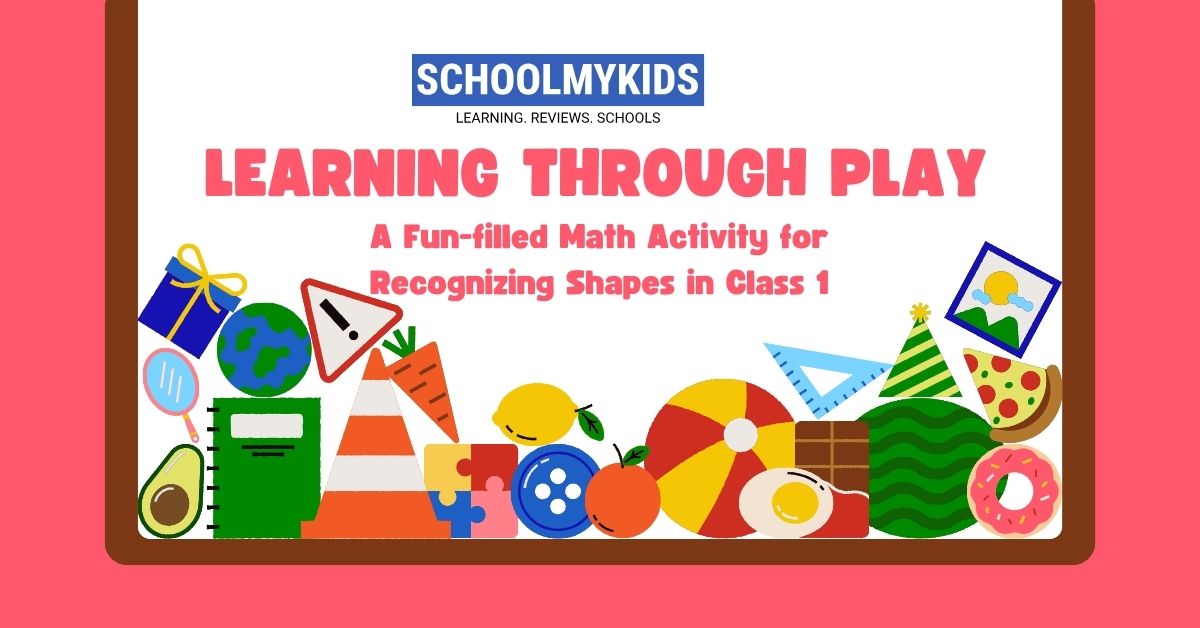The world of mathematics for young learners shouldn’t be a dry, textbook experience. In Class 1, where curiosity runs wild, it’s all about igniting a love for learning through exploration, discovery, and of course, a healthy dose of fun! This detailed article outlines a captivating math activity that helps students in Class 1 identify basic 2D shapes, explore sorting and classification, develop vocabulary related to shapes, and even delve into introductory counting skills (optional).
Setting the Stage for a Shape Adventure (Approximately 15 Minutes)
Capture Their Attention: Before diving into the world of shapes, we want to grab the students’ attention and get them excited to learn. Here are a couple of ways to kick things off:
- A Warm-up with Movement (Optional – 5 minutes): Start with a quick game of Simon Says, but with a twist! Instead of body parts, use shapes in the instructions. For example, shout, “Simon Says touch your head – a circle!” or “Simon Says jump up high – a triangle!” This energizes the students and subtly introduces them to the shapes they’ll be encountering in a fun, active way.
- Introducing the Shape Detectives (5 minutes): Gather the students together and announce, “We’re going on a shape adventure today!” Unveil a set of large, colorful construction paper cutouts featuring the target shapes – circle, square, triangle, and rectangle. Hold up each shape one by one, clearly pronouncing its name. For an extra touch of engagement, you can have students repeat the name of the shape after you.
- Exploring Shape Properties (5 minutes): Now comes a mini-discussion about the unique features of each shape. Keep the language simple and relatable. For instance, you can point out the four straight sides of a square or the single curved line of a circle. Ask questions like, “How many corners does a square have?” or “Can you trace the round edge of the circle with your finger?” Encourage questions and invite students to share their observations about the shapes.
Delving into the Shape World (Approximately 25 Minutes)
This is where the real learning magic happens! Here are some engaging activities to solidify the students’ understanding of shapes:
- Independent Shape Exploration (15 minutes): Distribute the construction paper shapes to each student. Let their imaginations soar as they explore the shapes freely. Encourage them to trace the shapes with their fingers, identify the sides and corners, and talk about their discoveries with their classmates. This hands-on exploration allows students to learn through touch and visual observation. You can even ask them questions like, “Does the circle have any corners?” or “How many sides does the triangle have?” to further stimulate their thinking.
- Shape Sorting Extravaganza (Optional – 10 minutes): Sorting is a fundamental skill in mathematics, and this activity adds a playful twist to learning. Here are two options to implement:
- Option 1: Sorting Mat Sensations: Introduce a large sorting mat or chart paper divided into sections. Each section should be labeled with the name and image of a target shape (circle, square, triangle, rectangle). Provide students with a set of colorful manipulatives, all the same size and color (buttons, pom poms, counters). Instruct them to sort the manipulatives onto the designated sections of the mat based on their shape. As they sort, encourage them to count the number of objects they place in each section (optional). This activity reinforces shape recognition, classification skills, and basic counting.
- Option 2: Bag It By Shape: Distribute bags or containers to each student. Ask them to sort the manipulatives into their own bags based on shape. For example, all circles go into one bag, all squares in another, and so on. This option promotes independent sorting and reinforces shape identification. For an added challenge, you can ask students to identify how many objects they have in each bag after sorting.
Extending the Shape Fun (Approximately 15 minutes)
Learning doesn’t have to stop at sorting! Here are some creative ways to extend the activity and keep the momentum going:
- Shape Doodling Delight (Optional – 10 minutes): Spark students’ creativity by distributing age-appropriate crayons or markers. Ask them to draw their favorite shape on a piece of paper and decorate it. They can draw a house with a square roof and a circular window, or a car with rectangular wheels and a triangular roof. This allows them to express their understanding of shapes in a visually engaging way and connect shapes to real-world objects.
- Shape Scavenger Hunt (Optional – 5 minutes): Hide the construction paper shapes around the classroom, strategically placing them in different locations (on the floor, on tables, even taped to the walls!). Instruct the students to embark on a shape scavenger hunt, finding and identifying the hidden shapes. This adds a touch of physical activity and reinforces shape recognition in a new environment.
Bonus Activity: Building with Shapes (Optional – 10 minutes): For an extra challenge, provide students with building materials like blocks or interlocking cubes. Challenge them to work together in small groups to create a specific shape (house, car, animal) using the blocks. This activity encourages teamwork, problem-solving skills, and spatial reasoning as they translate 2D shapes into 3D structures.
Wrapping Up and Assessment (Approximately 10 minutes)
The conclusion of the activity is a crucial time to solidify learning and assess understanding. Here’s how we can bring it to a close:
- Revisiting Shapes Together (5 minutes): Gather the students together and revisit the names and properties of the shapes you introduced earlier. Play a quick guessing game where you describe a shape (e.g., “I have four equal sides and four corners. What am I?”) and students identify it. This interactive review helps gauge their comprehension.
- Informal Assessment Throughout (Ongoing): Pay close attention to student participation throughout the activity. Observe how they explore the shapes, sort the manipulatives, and participate in discussions. Did they readily identify the shapes? Were they able to sort them accurately? This ongoing observation provides valuable insights into their understanding.
Celebrate Success! End the activity on a positive note by praising the students for their participation and effort. You can even put their artwork (shape drawings) on display in the classroom to celebrate their creativity.
By incorporating these engaging activities, you can transform a basic math lesson into a fun-filled shape adventure! Remember, the key is to create a stimulating environment where students can learn through play, exploration, and discovery









Be the first one to comment on this story.